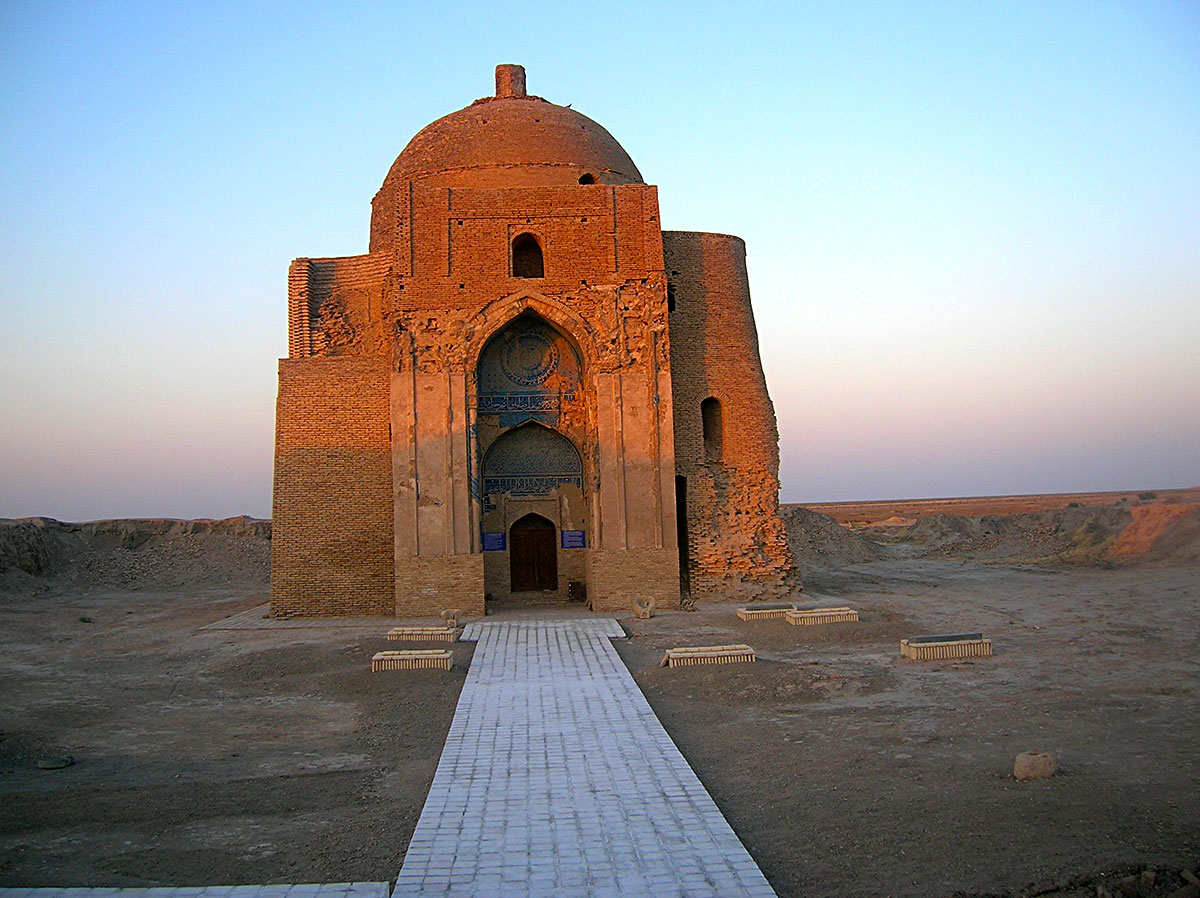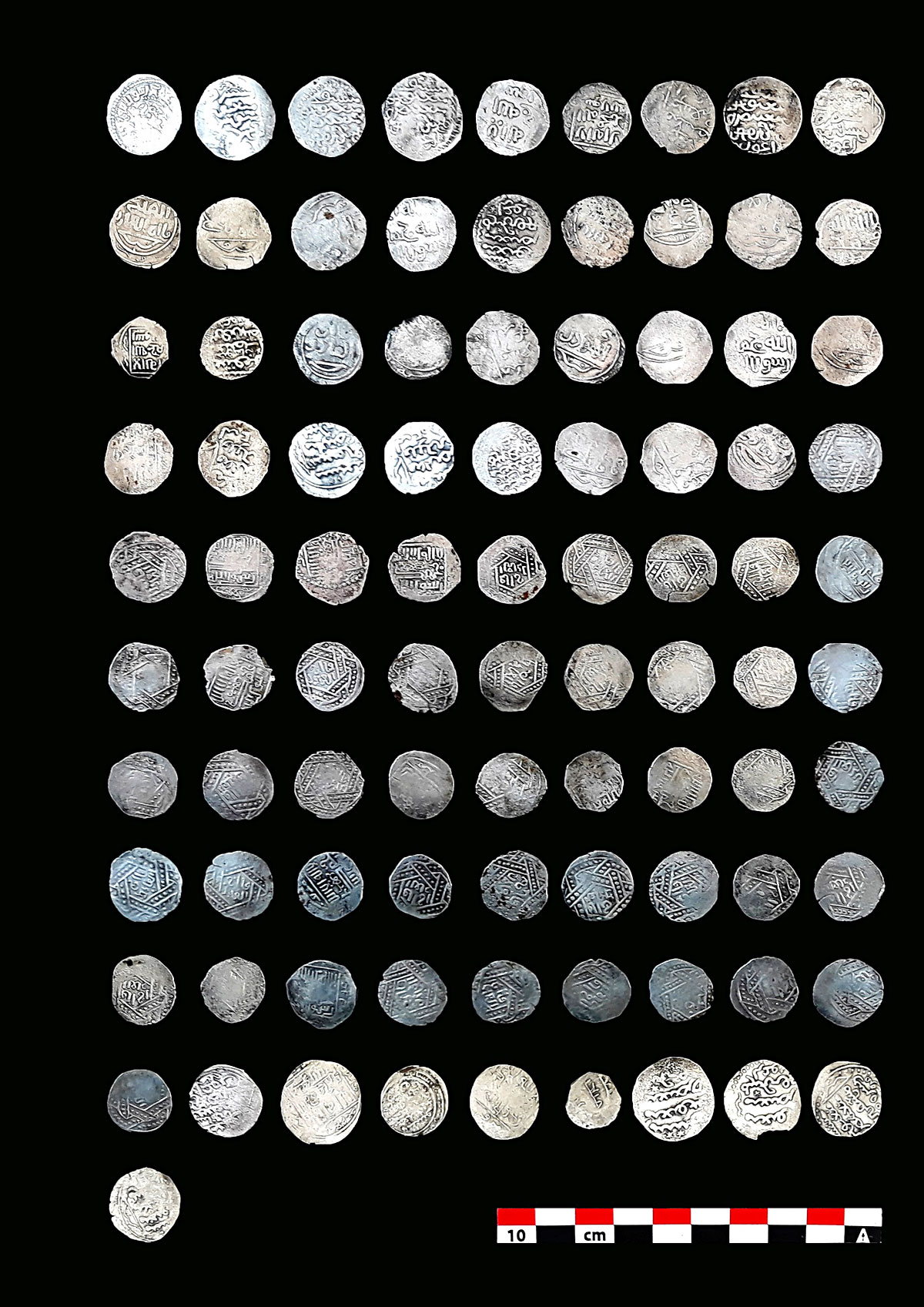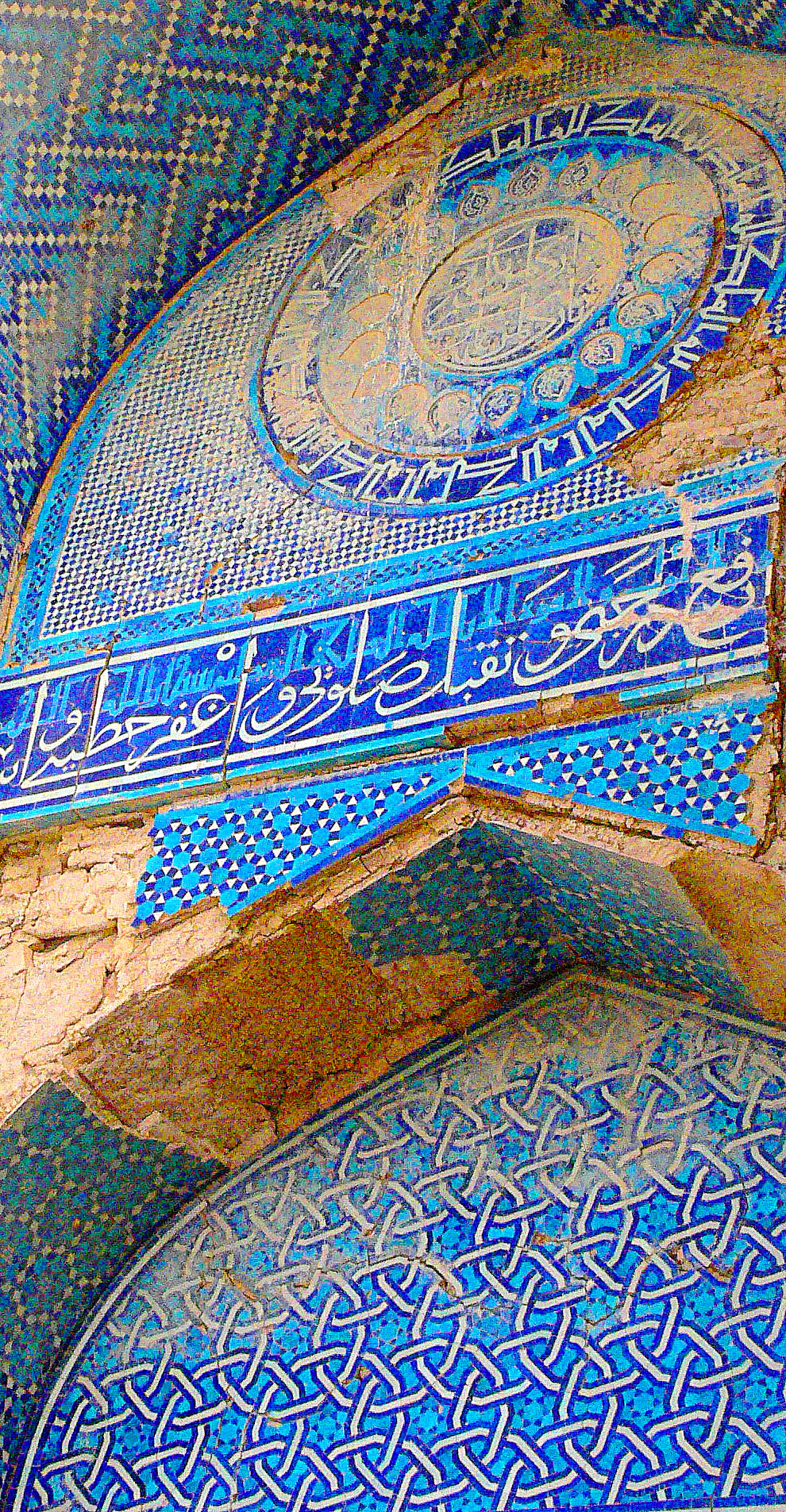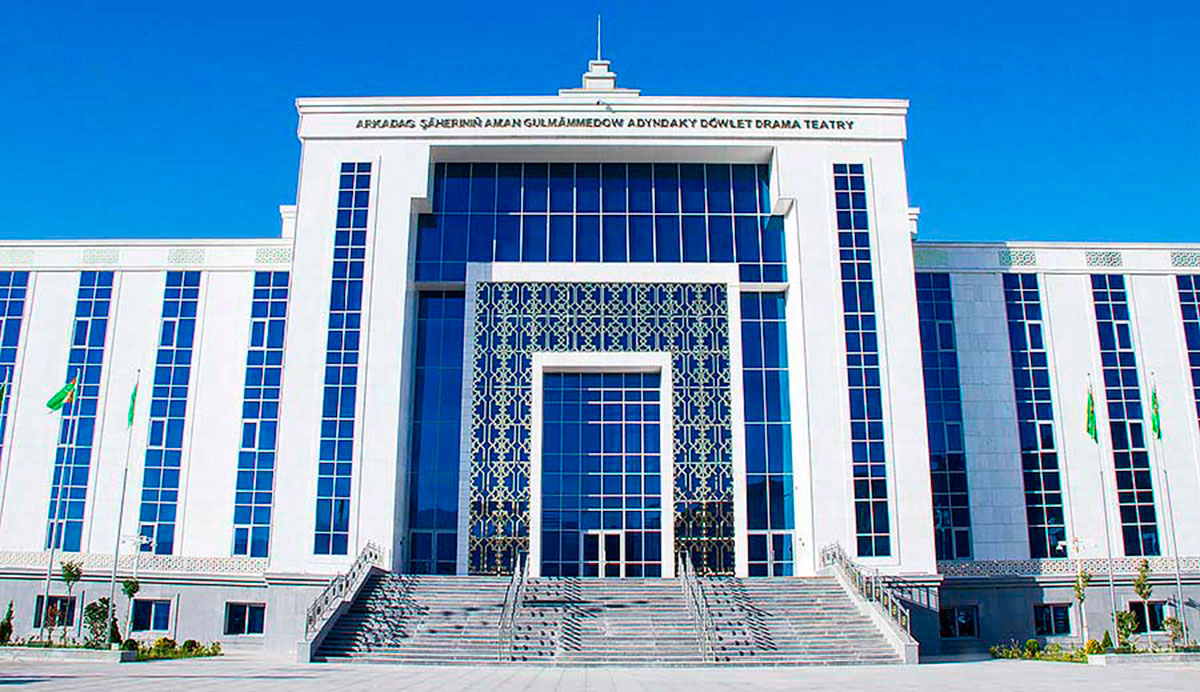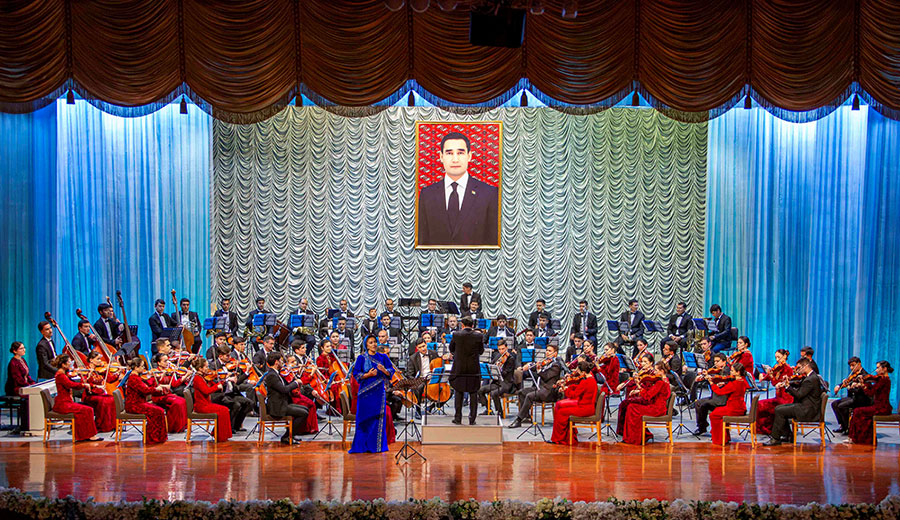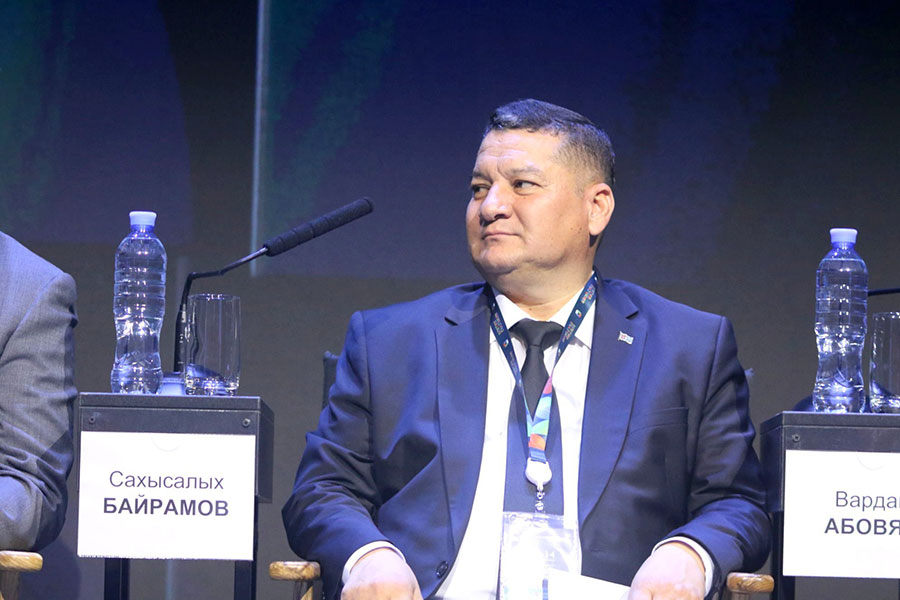In his second volume of book “Turkmenistan – the Heart of the Great Silk Road” President Gurbanguly Berdimuhamedov speaks of importance of historical places related with this unique trade route, which used to serve to bring the nations of two parts of Eurasia together for many centuries and millenniums.
Small town of Mehne is one of these places, which had several bazars and caravansaries according to medieval chronicles. However, it did not bring any publicity to Mehne; it was the mausoleum of Sufi Sheiks Abu Said Abul Hayr, which is also known as Myane Baba among people that glorify the town around all Muslim world.
In our days, the mausoleum of Sufi Sheikh Myane Baba is located in Kaahka etrap, Ahal Velayat, on the border of archaeological remains of ancient town of Myahne. According to medieval chronicles, it has Idris carvansay, which had more than forty big scales for weighing the goods.
The mausoleum of sheikh Abu Said, which was built on his grave in Xi century, undoubtedly is the main facility that glorify the town around all Islamic world. The monument have been studied by specialists of National Department of Protection, Study and Restoration of Historical and Cultural Monuments of Turkmenistan as well as by personnel of the State Historical and Cultural Reserve Abiverd for many years.
The researchers found fistful of coins on the cultural level of XIII century during archaeological excavation of the floor in the interior of the mausoleum for study of multi-layered structure of the tilling and finding out the dates of restoration works, which were made here for many centuries.
Having stayed for many centuries in humidity, the coins were oxidized and were not clear to be studied. After thorough cleaning in laboratory, the specialists have managed to find out that these were silver dirhams of different embossing.
91 silver coins have been found altogether; 47 of them had a name of Abaga-Khan who used to rule the State of Ilkhanids in 1265 – 1282. Another 36 coins had a name of Argun. There were two major historical figures with this name. these are Argun Khan who used to rule the State of Ilkhanids in 1284 – 1291 and Turkmen Argun Shakh, the Ruler of Khorasan with the capital in Merv.
Two coins with name of Argun Khan had special attraction for the collectors. Their reverse has the embossing of animals. One of them has outlines of a lion while another had an animal, which looks like a bull.
According to the specialists, such zoomorphic motifs were typical to the mints of big cities of Khorasan of that time. The researches have a theory that these embossing marks the year of Chinese calendar of 12-year animal cycle (muche) when the coins were made.
Other 8 dirhams are related to the State of Ilkhanids as well but it is impossible to read the name of the ruler. Specialists do not exclude that it could have been Gazan Khan from Chengiz rulers, who according to Rashid Ad Din have adopted Isla, made pilgrimage to the sanctuary of Sheikh Abu Said Abul Hayr and ordered to restore it. This was the time when wonderful mosaic have appeared on the porta of the mausoleum. The mausoleum of the great old man Myane Baba, who blessed the first sultans of Turkmen State of Seljuks, was always the place, which was taken care of by people and rulers. The chronicles say that Sultan Sanjar himself paid special attention to the sanctuary.
After the centuries, the centres of political and cultural life were moved thousands kilometres away from abandoned town of Mehne due to historical event that led to appearance of new states but the grave of Sheikh Abu Said Abul Hayr remained the place of special worship and silver coins, which were discovered there, are another evidence to this.
Small town of Mehne is one of these places, which had several bazars and caravansaries according to medieval chronicles. However, it did not bring any publicity to Mehne; it was the mausoleum of Sufi Sheiks Abu Said Abul Hayr, which is also known as Myane Baba among people that glorify the town around all Muslim world.
In our days, the mausoleum of Sufi Sheikh Myane Baba is located in Kaahka etrap, Ahal Velayat, on the border of archaeological remains of ancient town of Myahne. According to medieval chronicles, it has Idris carvansay, which had more than forty big scales for weighing the goods.
The mausoleum of sheikh Abu Said, which was built on his grave in Xi century, undoubtedly is the main facility that glorify the town around all Islamic world. The monument have been studied by specialists of National Department of Protection, Study and Restoration of Historical and Cultural Monuments of Turkmenistan as well as by personnel of the State Historical and Cultural Reserve Abiverd for many years.
The researchers found fistful of coins on the cultural level of XIII century during archaeological excavation of the floor in the interior of the mausoleum for study of multi-layered structure of the tilling and finding out the dates of restoration works, which were made here for many centuries.
Having stayed for many centuries in humidity, the coins were oxidized and were not clear to be studied. After thorough cleaning in laboratory, the specialists have managed to find out that these were silver dirhams of different embossing.
91 silver coins have been found altogether; 47 of them had a name of Abaga-Khan who used to rule the State of Ilkhanids in 1265 – 1282. Another 36 coins had a name of Argun. There were two major historical figures with this name. these are Argun Khan who used to rule the State of Ilkhanids in 1284 – 1291 and Turkmen Argun Shakh, the Ruler of Khorasan with the capital in Merv.
Two coins with name of Argun Khan had special attraction for the collectors. Their reverse has the embossing of animals. One of them has outlines of a lion while another had an animal, which looks like a bull.
According to the specialists, such zoomorphic motifs were typical to the mints of big cities of Khorasan of that time. The researches have a theory that these embossing marks the year of Chinese calendar of 12-year animal cycle (muche) when the coins were made.
Other 8 dirhams are related to the State of Ilkhanids as well but it is impossible to read the name of the ruler. Specialists do not exclude that it could have been Gazan Khan from Chengiz rulers, who according to Rashid Ad Din have adopted Isla, made pilgrimage to the sanctuary of Sheikh Abu Said Abul Hayr and ordered to restore it. This was the time when wonderful mosaic have appeared on the porta of the mausoleum. The mausoleum of the great old man Myane Baba, who blessed the first sultans of Turkmen State of Seljuks, was always the place, which was taken care of by people and rulers. The chronicles say that Sultan Sanjar himself paid special attention to the sanctuary.
After the centuries, the centres of political and cultural life were moved thousands kilometres away from abandoned town of Mehne due to historical event that led to appearance of new states but the grave of Sheikh Abu Said Abul Hayr remained the place of special worship and silver coins, which were discovered there, are another evidence to this.




